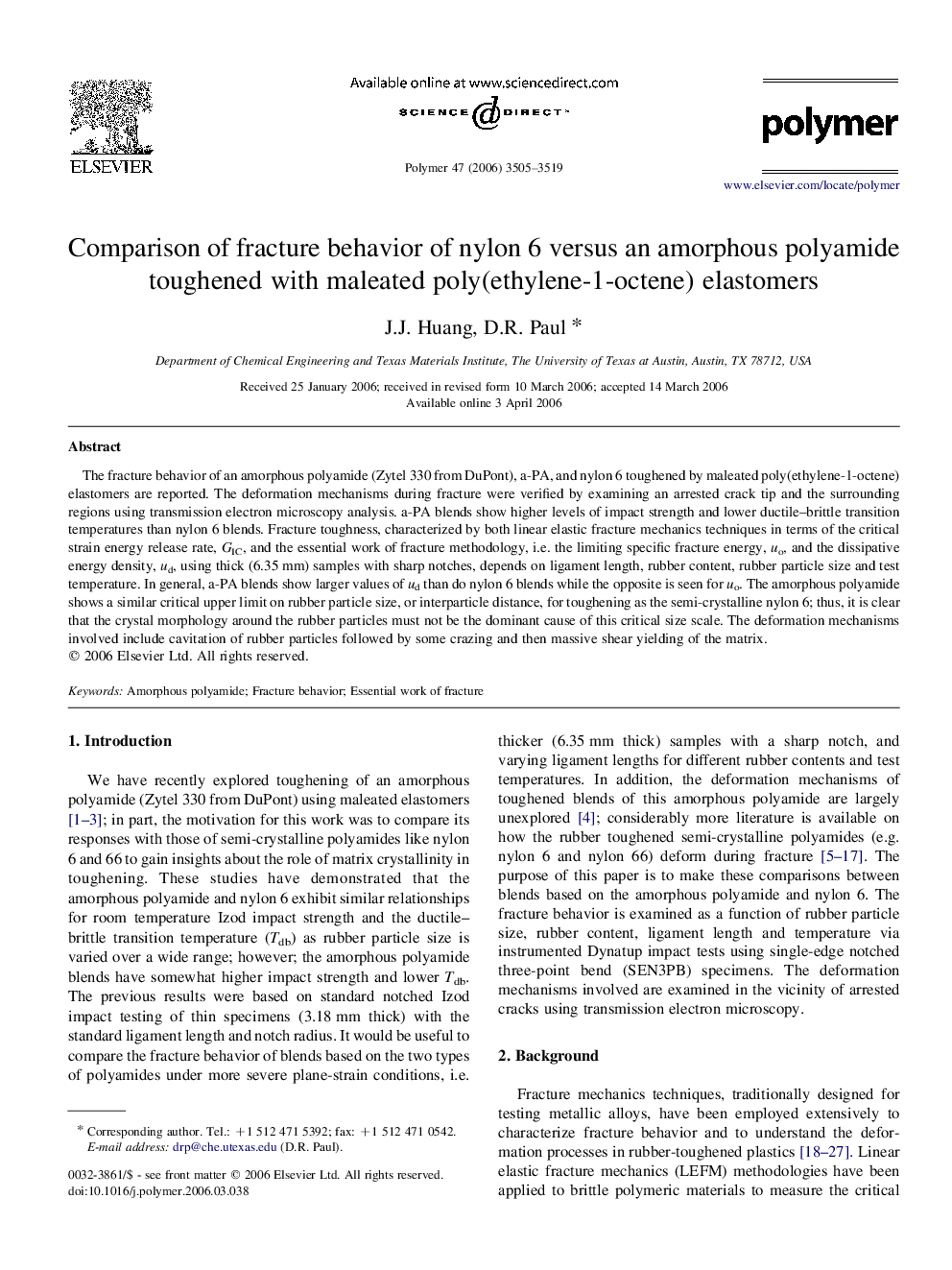| کد مقاله | کد نشریه | سال انتشار | مقاله انگلیسی | نسخه تمام متن |
|---|---|---|---|---|
| 5187120 | 1381121 | 2006 | 15 صفحه PDF | دانلود رایگان |

The fracture behavior of an amorphous polyamide (Zytel 330 from DuPont), a-PA, and nylon 6 toughened by maleated poly(ethylene-1-octene) elastomers are reported. The deformation mechanisms during fracture were verified by examining an arrested crack tip and the surrounding regions using transmission electron microscopy analysis. a-PA blends show higher levels of impact strength and lower ductile-brittle transition temperatures than nylon 6 blends. Fracture toughness, characterized by both linear elastic fracture mechanics techniques in terms of the critical strain energy release rate, GIC, and the essential work of fracture methodology, i.e. the limiting specific fracture energy, uo, and the dissipative energy density, ud, using thick (6.35Â mm) samples with sharp notches, depends on ligament length, rubber content, rubber particle size and test temperature. In general, a-PA blends show larger values of ud than do nylon 6 blends while the opposite is seen for uo. The amorphous polyamide shows a similar critical upper limit on rubber particle size, or interparticle distance, for toughening as the semi-crystalline nylon 6; thus, it is clear that the crystal morphology around the rubber particles must not be the dominant cause of this critical size scale. The deformation mechanisms involved include cavitation of rubber particles followed by some crazing and then massive shear yielding of the matrix.
Journal: Polymer - Volume 47, Issue 10, 3 May 2006, Pages 3505-3519